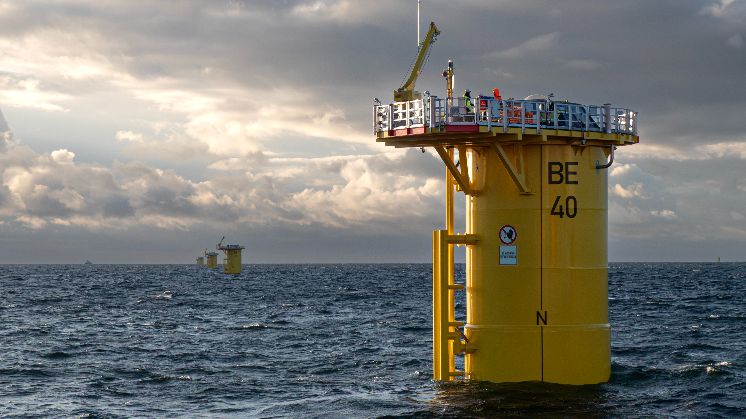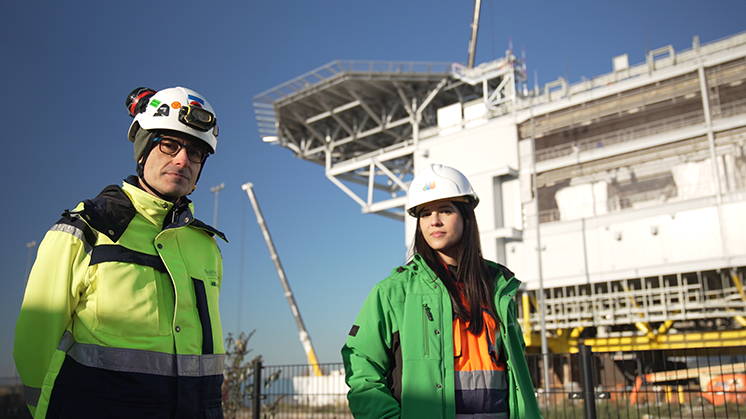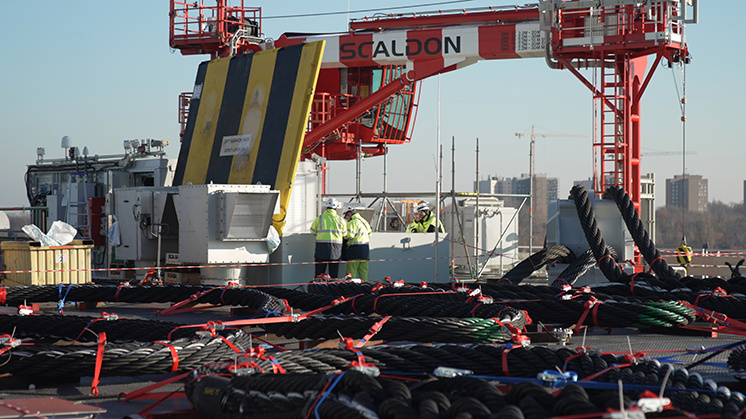Baltic Eagle offshore wind farm
Baltic Eagle, our second large offshore wind farm in Germany
Iberdrola projects Offshore wind Germany
Iberdrola Group operates its second major offshore wind project in the Baltic: Baltic Eagle. Located 30 kilometres to the northeast of Rügen island off the coast of Pomerania (Germany), this new 476 megawatt (MW) installation supply renewable energy to 475,000 households.
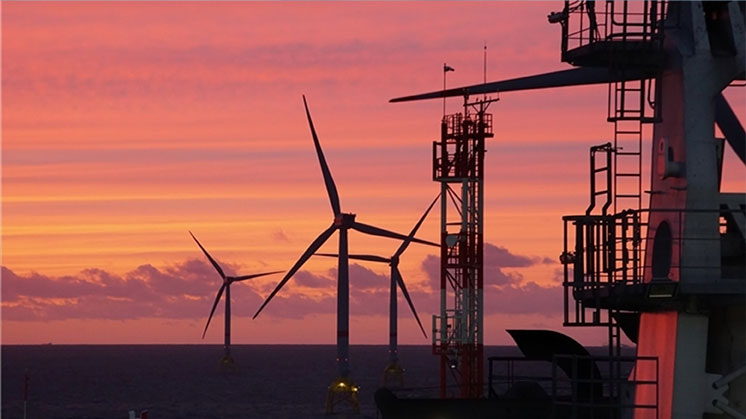
Baltic Eagle Offshore Wind Farm




Baltic Eagle, with a capacity of 476 MW, has 50 wind turbines of 9.53-MW of unit power on monopiles, for an annual production sufficient to meet the needs of 475,000 homes and avoid the emission of 800 thousand tonnes of CO2 into the atmosphere every year.
In July 2023, we signed a strategic agreement with Masdar to co-invest in the Baltic Sea wind farm, which under the terms of the deal is valued at approximately €1.6 billion euros. Since 2006, the UAE’s flagship renewable energy company has been a pioneer in advancing the clean energy sector in the UAE, the Middle East and around the world, delivering more than 20 GW of energy to power more than 5.25 million homes.
Main components of wind turbines
MHI Vestas Offshore Wind is the official supplier of the MVOW V174 turbines. The installation began in May 2024 with the placement of the first of the 50 wind turbines that make up this wind farm. These turbines have the industry's largest commercially proven rotor size and most powerful output, with 174-m rotor blade diameter — whose swept area is 23,778 m2, equivalent to 3.3 football fields — and a hub elevation of 107 m above sea level. It will be the largest project Vestas has installed offshore in Germany.
The remaining turbines were installed throughout 2024 with the offshore jack-up installation vessel Blue Tern, which is specially designed for the Baltic Sea seafloor thanks to its long legs. This jack-up vessel is owned by Fred. Olsen Windcarrier, which already collaborated with Iberdrola during the construction of the Wikinger wind farm, and has an 800t main crane capable of transporting the towers, nacelles and blades to the offshore construction site and assembling them on the transition pieces.
For its part, the foundations were carried out by Asturian Windar and German EEW SPC.
Windar manufactured the 50 transition pieces as well in Avilés (Asturias), which join the turbine towers to the foundations. The company has completed in 2022 the entire production, which involved some 800 jobs and involved nearly 30 suppliers from northern Spain.
The 50 monopiles were fabricated at EEW's mega-factory in Rostock (by the Baltic Sea). With a 9 to 8.75 m diameter, a 75 to 90 m length and a maximum foundation weight of 1,402 tonnes, these components were built from January 2022 to January 2023. Load out begun in April and ended in September 2023.
The transport and installation of the foundations as well as the supply, transport and installation of the interconnection cables have been awarded to Van Oord. The Dutch company deployed its 8,000-tonne heavy lift installation vessel, the Svanen, to install the 50 monopiles, which has installed more than 700 foundations across Europe. Van Oord used its Nexus vessel and the Dig-It trencher, which is adapted to the difficult sea floor conditions in the Baltic, to lay the cables between the various assemblies.

Construction of an offshore wind plant
Everything about offshore wind farm construction.
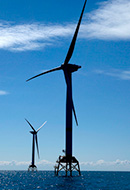
Evolution of wind energy in Europe
The European wind market has grown strongly over the last 25 years. Find out more.
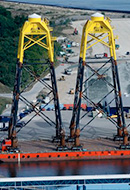
Offshore wind turbines foundations
How are offshore wind turbines anchored at sea?
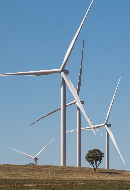
What is a PPA?
A PPA (Power Purchase Agreement) is a long-term agreement for the purchase of energy.
Electrical substations
The offshore substation —central core whose function is to collect the electricity produced by the wind turbines and transform the voltage from 66 kV to 220 kV— is operated by 50Hertz, the transmission system operator in north-eastern Germany and the company responsible for connecting the offshore wind farm to the grid, and is used by both companies.
Weighing a total of 7,150 tonnes, it consists of foundations and a platform with transformers and electrical equipment. It will be shipped and installed by the marine shipper Heerema, and its structural elements will be manufactured by joint-venture Iemants-Fabricom.
The wind farm is connected to the Lubmin onshore wind farm via two high voltage subsea cables, each measuring 90 km, which was also installed by 50Hertz.
It will be located in waters between 40 and 45 metres deep and cover an area of 40 km2 to the northeast of Rügen Island. Activities at the wind farm will be undertaken from the port of Sassnitz-Mukran in Rügen.
Installation work on the power substation was completed in February 2023.
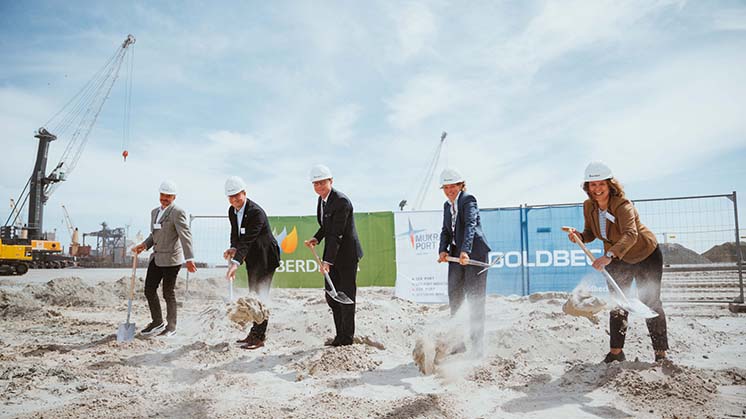
The operations and maintenance building is located in the port of Sassnitz, with whom the company has signed a lease agreement.
This development of this project has enabled the creation of high-quality jobs along the entire value chain of the offshore wind sector, which has significant potential for growth, while helping to reindustrialise and modernise shipyards all over the continent.
The company was awarded this project in April 2018 in a second offshore tender launched by the Federal Networks Agency (Bundesnetzagentur).
A megaproject in the Baltic Sea
The Baltic Sea holds an incredible potential of 93,000 MW for offshore wind in Europe. Alongside Germany, several countries, such as Poland, Sweden and Estonia are exploring new opportunities for offshore wind developments.
Baltic Eagle represents the second large offshore wind farm promoted by the Iberdrola Group in Germany, after the commissioning of the Wikinger offshore wind farm (350 MW) at the end of 2017. Furthermore, the company is building a third offshore facility in Germany: Windanker (315 MW). These three wind farms, located next to the island of Rügen, will give rise to the largest offshore wind complex in the Baltic Sea, with a total installed capacity of more than 1.100 MW.
Baltic Eagle and Wikinger, with a combined capacity of 826 MW, comprise the heart of the Baltic Sea Hub, which will act as a centre for offshore and onshore services, as well as provide local support for Iberdrola's projects in the Germany and the Baltic coastal countries. They are able to produce enough energy to meet 45 % of the total electricity consumption of the state of Mecklenburg-West Pomerania and will save 1.65 million tonnes of CO2 emissions each year, thus contributing to meeting the emission reduction targets set by Germany.
Iberdrola, world leader in renewable energies
At Iberdrola, we dare committed to renewable energy more than two decades ago as a fundamental pillar on which to build our safe, clean and competitive business model. Thanks to this vision, we are today world leaders in renewables, reaching 44,478 MW of clean energy in operation at the end of 2024.
This commitment is reflected in our Strategic Plan, in which we will allocate €15.5bn gross to renewables. More than half of this amount is focused on offshore wind in the US, UK, France and Germany; 28% on onshore wind and 18% on solar.
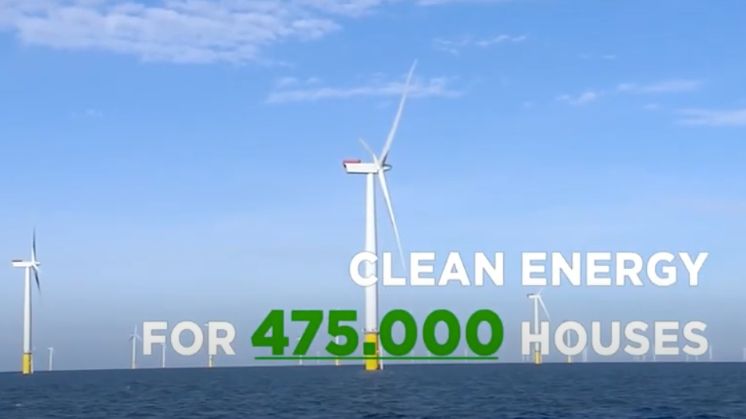
Characteristics of the Baltic Eagle offshore wind farm.

Construction of the Baltic Eagle wind farm






